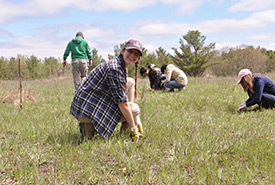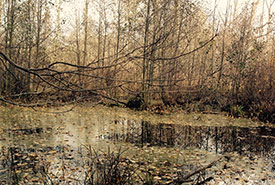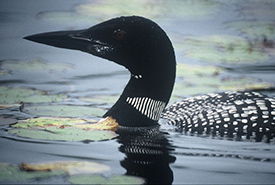Where are they now? Intern Alumni Spotlight: Victoria Shore

Victoria Shore planting native species while working as an intern at NCC (Photo by NCC)
This blog marks the seventh Intern Alumni Spotlight — a series highlighting some of the individuals who have interned with the Nature Conservancy of Canada (NCC) in the past. Last month, Ryan Dudragne was featured as the Intern Alumni...
Measuring what matters: Biocapacity and ecological footprint

Participants of the joint Global Footprint Network and York University workshop (Photo courtesy of Martin J. Bunch, PhD)
The most-used measure of a country’s progress is its gross domestic product (GDP) — the value of the goods and services produced over a period of time, such as a year. A huge drawback of GDP, however, is that it does not fully reflect...
Antlers of the East: Tracking the decline of the Atlantic-Gaspésie caribou (part one)

Woodland caribou at the summit of Mont Jacques-Cartier, tallest among the Chic Choc Mountains of Gaspésie National Park, QC. (Photo by Zack Metcalfe)
It was August 18, 2017, when I gained the summit of Mont Jacques-Cartier, an alpine peak of shattered stone and meagre vegetation some 1,270 metres above Quebec’s Gaspé Peninsula. Several stones were organized into mounds, marking the...
Carbon and wetlands: So what's the big deal?

Wetlands can support lots of plants and vegetation. (Photo by Amanda Loder)
Wetlands can support a lot of plants and vegetation, which take up carbon from the atmosphere. What's unique about wetlands is that they enable dead plant material and the carbon they contain to be buried in their soils without being released into...
A world without wetlands

Brighton Wetland, Eastern Lake Ontario Coast (Photo by David Coulson)
I live next to a swamp. After 20 years of having this swamp as my neighbour, it’s kind of grown on me. I enjoy the spring flush of marsh marigolds, the annual reawakening of spring peepers, and I still smile when I see a colourful wood duck...
Five facts about grizzly bears that will surprise you

Grizzly bear (Photo by Caroline Henri)
Perhaps no other animal symbolizes the stunning beauty of the Canadian wilderness as much as the grizzly bear. A type of brown bear, grizzly bears occur in the wilderness of western and northern Canada. The species' scientific name, Ursus...
Dr. Crayfish, I presume?

Premek Hamr, PhD (a.k.a. Dr. Crayfish) (Photo courtesy of Premek Hamr, PhD)
At the Nature Conservancy of Canada's annual Ontario Region staff meeting last May, a few of us stepped outside to wander the shoreline of Lake Simcoe and admire the sunset. As we rooted around the rocky beach, I took a few photos of plants and...
Ten good news nature conservation stories from 2018: Our collective actions can have a big impact

Lands within the Jim Prentice Wildlife Corridor (Photo by Brent Calver)
Around the world, we are at a crossroads in our relationship with the planet. For the first time in human history our environmental impacts are happening at a scale that is affecting all life on Earth. Our collective experience in solving big,...
Heard it from a Scout: Discovering the winter night sky

Discover the winter night sky (Photo by Steve Owst CC0)
One of my most relevant memories during my Scouting years happened at a winter camp in E. C. Manning Provincial Park in BC on a frigid February night. Our patrol was made up of a group of eight Scouts, between 11 and 13 years old, camping in a...
Sudbury lakes are becoming less acidic

Common loons moult their feathers, starting at the base of their bills, before autumn migration in September. (Photo by Robert Alvo)
In my July 5, 2018, blog, I summarized my findings of over 25 years of examining the effects of lake acidification on common loon breeding success in the Sudbury region of Ontario. Although Sudbury's lakes have improved after decades of sulphur...

